Domorela's Blog: Virtual Lab with Domorela DMRL1: Alarm configuration
Domorela DMRL1 takes into consideration two kinds of alarms, the ones related to technical issues and the ones related with security systems. Technical alarms are usually thrown by devices detecting malfunction of any of its components, but can also be thrown by sensors detecting, for instance, pressure or temperature anomalies related with HVAC or cold room in a warehouse or laboratory. This first group also includes security alarms related to fire safety, anti-inundation security, etc. The other group are those related with security systems dedicated to personal safety and anti-intrusion safety. Anyway, regardless of the type of alarm, its behaviour and management is identical in Domorela DMRL1.
In our Lab we are using technical alarms to detect malfunction of HVAC and sensor components, we also use security alarms to both personal and anti-intrusion safety, by detecting presence with movement sensors and managing inputs from security alarms in the ALLinBOX 88.
So the Group Addresses structure is as follows, the Main Group used fot alarms is 3 and the Middle Groups use are, like in the previous groups, assigned per location:
- 0 for CPD (Datacentre), so to identify CPD alarms we will use 3/0/x as Group Addresses
- 1 for offices, so to identify offices alarms we will use 3/1/x as Group Addresses
- 2 for reception, then to identify reception alarms we will use 3/2/x as Group Addresses
You can see below an image of the Group Addresses report generated by ETS for the HVAC, showing the DPT used in them.
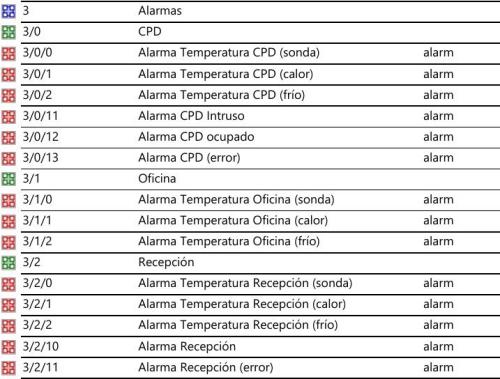
Technical alarms are the simplest to handle, because ALLinBOX 88 has Comm. Objects dedicated to malfunction problems with temperature probes and motion sensors, even they are included alarm Comm. Objects for inputs that we can use to announce malfunction of security alarms connected to them




While security alarms are more difficult to handle, because we need to configure detection of presence and intrusion using motion sensor. On the other hand, the security systems connected to ALLinBOX 88 inputs are handled in an easier way. You can see that in both cases we are using Updating Addresses in order to simulate the behaviour of ALLinBOX 88.
In the first case, we have linked Group Address 0/0/14, named as Luz 1 CPD intermitencia, in order to switch on when the state of Alarma CPD intruso becomes alarm.



In the second case, we have linked the Group Address 4/0/2, named as Sensor Movimiento CPD (presencia) in order to set the Group Address 3/0/12, named as Alarma CPD ocupado, in alarm state to indicate there are people inside the Data-centre.



We will configure all the Group Addresses related to technical alarms with Alarm contract in Domorela.
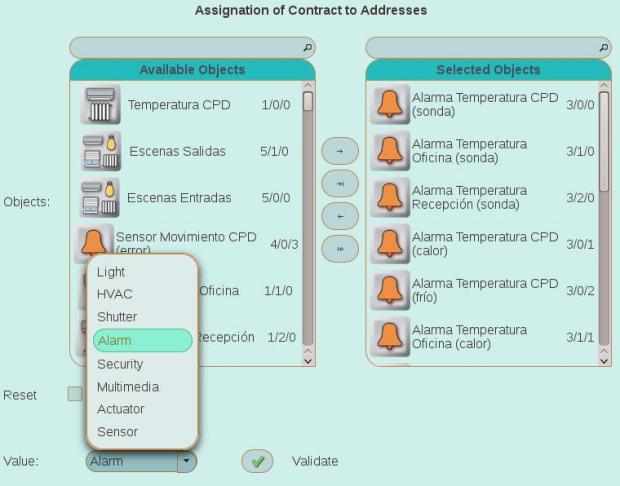
And all the Group Addresses related to security alarms first with Alarm and after with Security contract in Domorela.
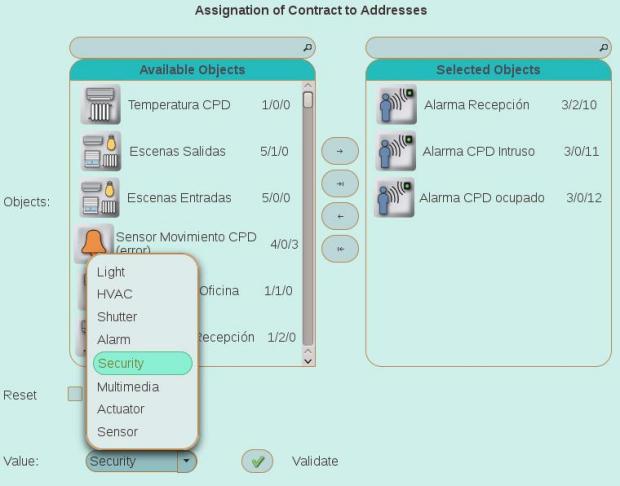
When an object has assigned an Alarm contract, Domorela DMRL1 will automatically register a new alarm in its configuration with a boolean condition. This means we should only assign Alarm contract to binary objects, so we can manage any kind of alarm defined within the DPT corresponding to Main type 1, that is: true/false, on/off, enabled/disabled and anyone else, but we prefer, and we recommend, to use alarm/no alarm when configuring alarms in ETS. Future versions of Domorela's software will include new alarm conditions that will be applied to another types of objects.
In order to deal with alarms we can use Domorela's WUI to identify fired alarms in Alarms View, in Security View or in Panel View as any other object, remember that any object is automatically included in the all the Elements Views corresponding to their contracts and is possible to add to the desired Panel View as any other object. It will be possible switch off an alarm when it has actuator controls, but note that while the condition of the alarm is being accomplished it may be switched on automatically at any moment.
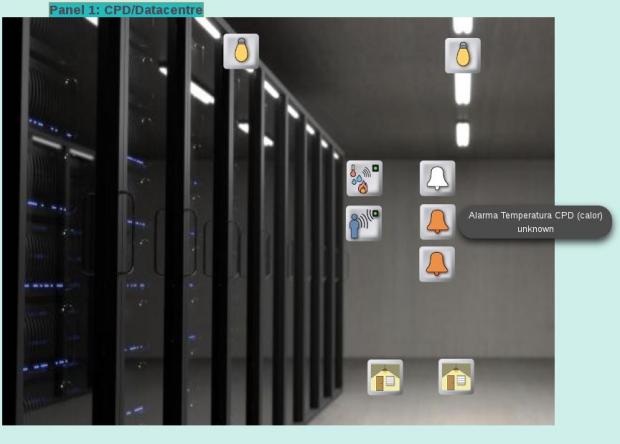
Remember that if you wish you can change the view mode of the Panel View and see all the elements in a table with all their controls.
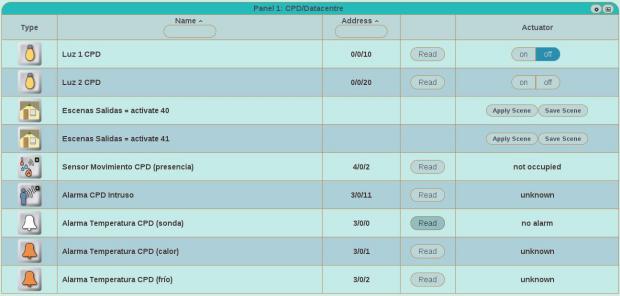
The better way to deal with alarms is through the Alarm Service of Domorela's REST API sending queries to get active alarms, acknowledge them or delete them. We will see it in a later article.
In our next article we will talk about sensor configuration in the Lab.